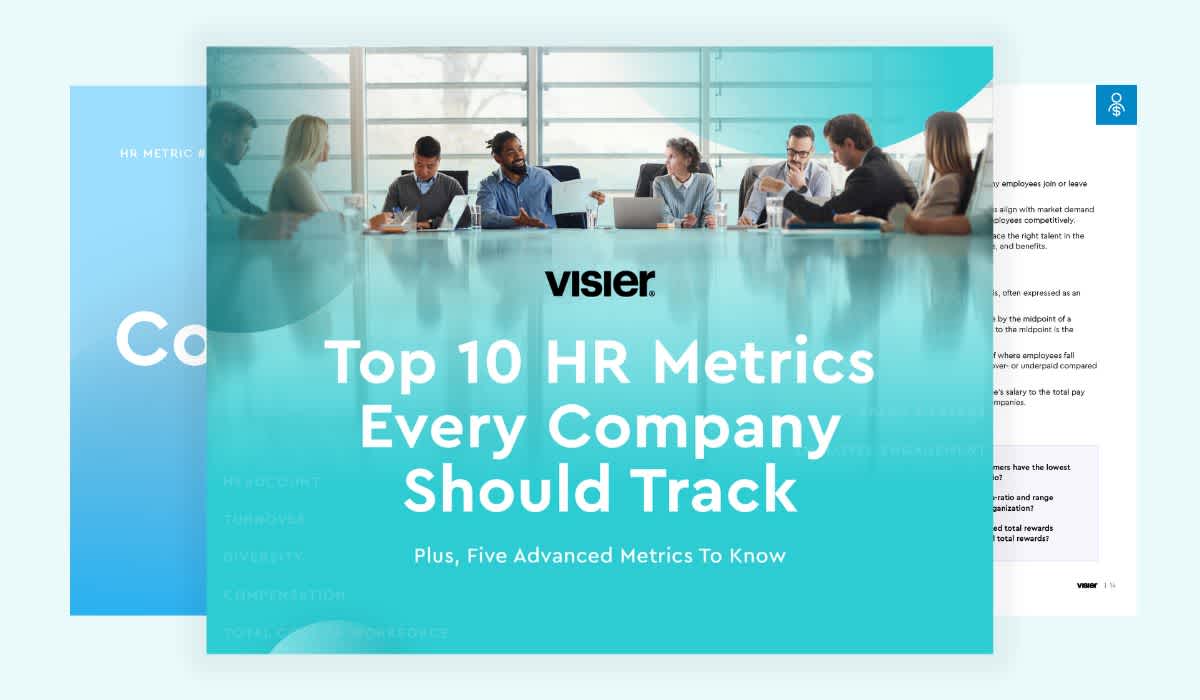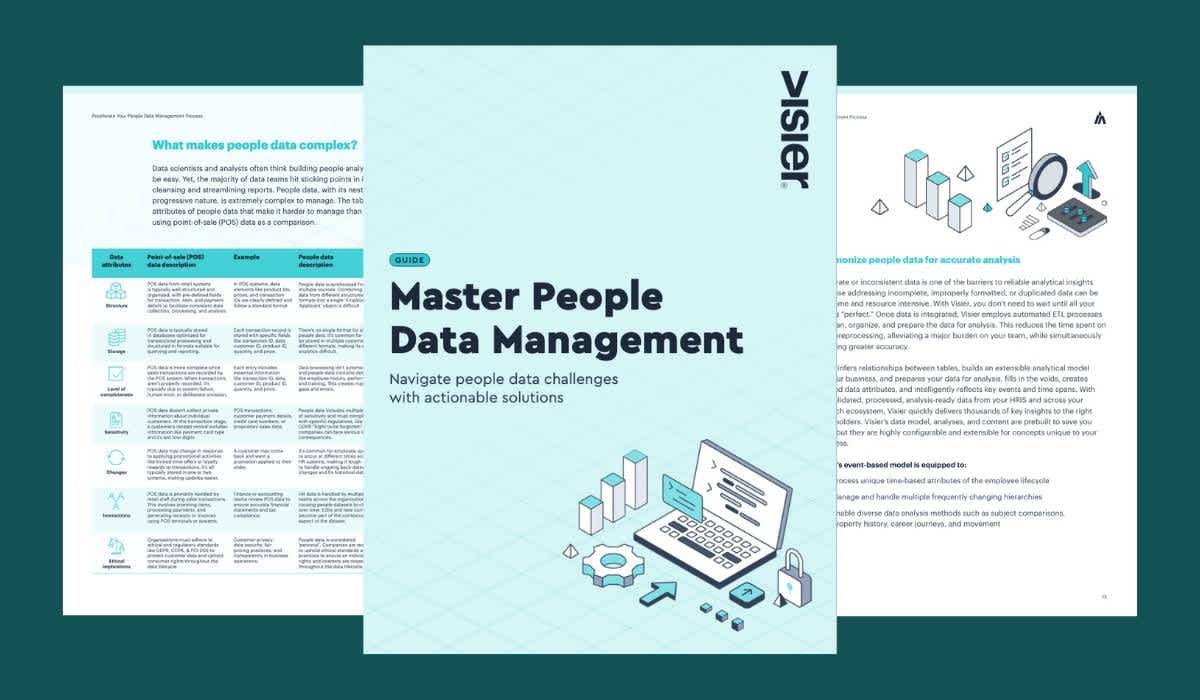What Is Data Mapping?
Data mapping is the process of connecting data fields in one source to those in another. Learn why that’s important and more.

Data mapping involves connecting data fields in one source with data fields in another source.
In other words, identifying the overlap in data fields between data sets and connecting those fields to reduce the potential for error, ensure data standardization, and pave the way for better understanding and usage of the data.
What are the different types of data mapping?
There are different ways to perform data mapping—from manual to schema-based. In between lies semi- and automated mapping. Visier offers pre-built data connectors to make it easy to handle importing data from all of a company’s HR systems. We extract and consolidate data from multiple sources to create a unified model that can be relied upon for making informed people decisions.
What are the steps involved in data mapping?
According to TechRepublic, data mapping includes five steps:
Identifying the data to be transferred and consolidated in a new location.
Establishing the data flow from one source to another (mapping).
Transforming the data: For example, changing or modifying the data to make it easier to store and use.
Testing and deploying: Validation and testing is an important part of the data mapping process to ensure that consolidation is occurring as intended and that the data fields are accurate and reliable.
Maintaining data maps over time: Data and organizational needs change over time. It’s important to regularly evaluate and update data maps to ensure their continued efficacy.
Data mapping is especially important in data migration. For instance when implementing a new data repository or system and moving data from one place to another.
How is data mapping used in HR and people analytics?
In organizations, especially very large organizations, data can exist in a variety of locations. Bringing that data together can help ensure consistency, accuracy, and timeliness, improving both quality and decision-making. The datafication of HR means that data is increasingly relied on to make people decisions. It’s important, of course, for that data to be integrated and accurate to make sure those decisions are well-informed.


